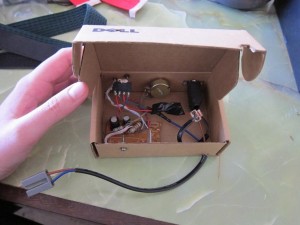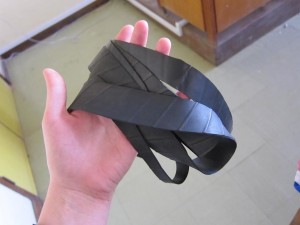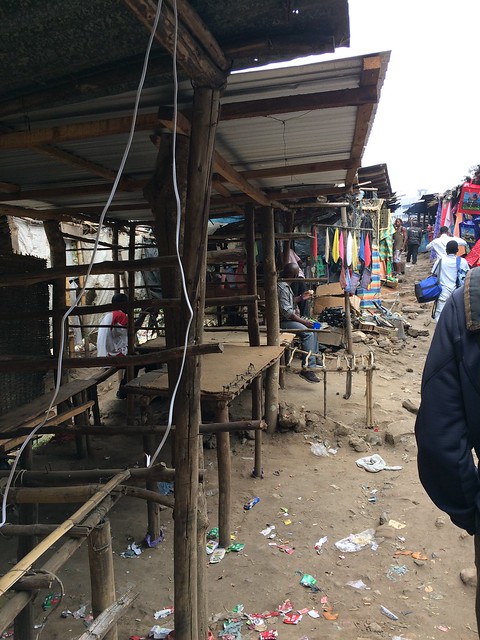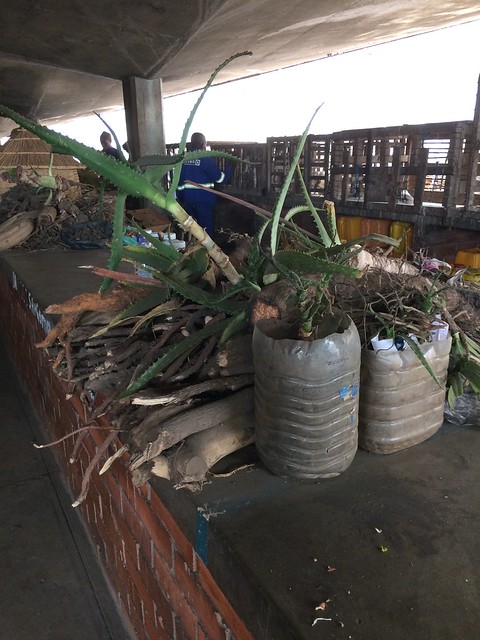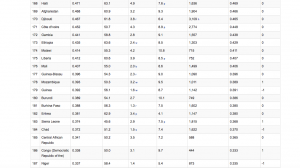Hey! So this is Part II of my lengthy (and yet not at all comprehensive) comparison of Malawi and Haiti. You can read Part I with the similarities here:
https://malawi.blogs.rice.edu/2015/07/19/malawi-vs-haiti-part-i/
Differences:
Language: So this one seems like a no-brainer. They don’t actually speak the same language in Eastern Africa as they do in the Caribbean. Surprise!
My brain’s been having a harder time with this one, probably because my Kreyol vocabulary is more extensive and esoteric (I can’t ask about someone’s water filtration habits or vitamin use in Chichewa, unfortunately). I’ve definitely tried to say something in Kreyol to a tomato seller in the market. It was pretty embarrassing…
The interesting thing about Malawi is that while Chichewa and English are the official languages, they are by no means the only ones spoken. Most people in the Central Region (home to both Namitete and Lilongwe) speak Chichewa, and many conduct business at the hospital and elsewhere in English. However, many people also speak a third language. Malawi is home to several different tribes, or ethnic groups, each possessing a unique language and culture. It’s not uncommon for children to speak Chichewa in the village, English at school, and their local language with their family. My question asking and readings have both suggested that major tribes include the Tumbuka (in the North), Chewa (in the Central Region), and Yao (in the South and along the lakeshore) (1). Given Namitando’s proximity to the borders with both Zambia and Mozambique, this melting pot is further complicated by the introduction of Portuguese and various local languages. In the face of this complexity, Chichewa serves as a bridge, creating social unity and facilitating trade. In contrast, Haiti is all Kreyol all the time. Unless, of course, it’s a formal setting, and then it’s French. Which leads me to…
Schooling: The school systems in both countries are far from peachy. Nonetheless, I’ve been comparatively impressed by Malawian education. As Dayo Olopade points out in her book “The Bright Continent”, Malawi is significantly closer to achieving universal primary education than many other Sub-Saharan African countries (2). Although both countries struggle with the still-prohibitory expenses of primary school (uniforms, books, school fees), Malawi is poised to have a better chance of accomplishing the UN’s Millennium Development Goals related to primary education (3). Of course, just because students have the opportunity doesn’t mean that the curriculum is good, that they will have capable (or even present) teachers. But one way that I think Malawi has the leg up on Haiti in this situation has to do with something that seems fairly intuitive: children are taught in their native language. In Malawi, students learn in Chichewa throughout primary school (excepting English class), and then switch to an emphasis on English in secondary school. In contrast, Haiti’s education system is focused on French, the colonial language that is considered a mark of the educated and genteel. Kreyol is widely considered to be a crude or illegitimate language, and people didn’t even bother recording the grammar and vocabulary of this unique French-African hybrid until the last 50 years or so. Having worked in Haitian schools, however, it’s easy to see that teaching in French is holding Haiti back. Students stare blankly, blindly copying lessons written in a language they’ve never spoken and never been officially taught. Pupils simply turn up for the first day of kindergarten and BAM! Now it’s time to speak French. While some groups are lobbying for a change in this seemingly backward system (4), I fear that Haiti has some major catching up to do if increasing primary school enrollment will actually mean anything.
The public medical system: In Malawi, if you go to a public hospital, it’s (*theoretically) free of charge. You can also be referred to a public hospital from a health center or private hospital –like St. Gabe’s- that lacks the equipment or personnel for adequate treatment. We’ve seen patients referred to Kamuzu Central Hospital (KCH) for everything from blood transfusion when there’s none to be found in the blood blank (5) to the necessity of a CT scan to plan surgery to relieve a subdural hematoma (bleeding into the brain) following a automobile accident. In Haiti, on the other hand, the public hospital is the last place you’d every want to be. Reserved for those individuals whose abject poverty is so stark that they have no other options, public hospitals like Lopital Jeneral in Les Cayes are dramatically under resourced. Power goes out during surgery, and I once saw a woman going into labor on the hospital steps because there was no delivery room available. Moreover, service in such hospitals is pay-as-you-go; you can’t get so much as a physical exam until you purchase a pair of latex gloves for the physician. What’s important to note is that both countries’ systems afford significant opportunities to fail their most vulnerable patients; simply getting patients to come to the hospital can involve complex webs of social and income-related challenges, not to mention the day-to-day care and feeding that in both systems requires family members to drop their work to nurse the patient.
Cholera, chikungunya, and dengue (oh my!). Haiti has some unique epidemiological events occurring at the moment. The story of cholera is both increasingly complex and worryingly political (6), while chikungunya has infected tens of thousands (myself included!) over the past year (7).
Climate: Haiti’s tropical locale makes pretty much every day prime time for catching malaria and other mosquito-borne diseases, while Malawi’s seasons make such illnesses relatively seasonal (like catching the flu in November in Chicago). This also produces differential effects on agriculture, which serves as the backbone of both of these largely rural societies. While Haiti’s crops do have seasons (such as mango season, my all-time favorite!), it’s possible to be growing year-round. This says nothing of the influence that NAFTA has had in prompting much of the nation’s food to be imported instead of grown, but still, it provides some stability to know that people can theoretically grow food (or catch fish) year round. Malawi, on the other hand, gets one main shot. Maize harvest occurs once a year, meaning that if a year happens to be bad (low yield due to disease, natural disaster, or lack of seed and fertilizer subsidies), people are pretty much up a creek without a paddle. The implications for malnutrition, especially among youth, are alarming.
Expectations about language: So in both countries, it is assumed that foreigners (azungu/blan) don’t necessarily speak the local language. However, I was warned that you would still be considered rude if you don’t greet everyone with a “Bonjou/bonswa” along the roads in Haiti. I haven’t encountered such customs in Malawi (or if they exist, no one has alerted me that I’m being impolite). Instead, “Mwadzuka/maswela bwanji” is used for acquaintances you meet along the path or people you randomly make intense eye contact with (to the point where it would be rude to ignore it). The bar for me to know these Chichewa greetings appears to be lower as well; on countless occasions, I’ve had my greetings met with peals of laughter or whispers after they think I’m out of earshot (talking in Chichewa about the weird azungu who spoke in their language).
Foreigners: The azungus/blan- or more broadly, the expatriates- form different communities and relationships in Malawi than they do in Haiti. For one, there seem to be a significantly larger number of Europeans in here. Whether this is due to the relative proximity (Note: RELATIVE. Malawi is still a 10-15 hour trip from Germany or Ireland), or the fact that we’re working with hospital that’s supported by a Luxembourgish Catholic order, I have no idea. Nonetheless, while Haiti is teeming with Americans, we appear to be the minority among the minority here. Additionally- though this may again be due to the fact that we’re in a rural community here in Namitando- I get the feeling that expats working in Malawi are here for the long haul, whether as development workers, medical professionals, or traipsing around Africa looking for adventure. A lot of the non-Haitians I met were staying in Haiti quite temporarily- journalists on assignment for 3 days, or large groups of tee shirt clad missionaries. I’ve met exceptions to these rules in both places, no doubt, but it’s an interesting contrast, nonetheless.
National identity: Haiti was the first black republic, founded through a bitter and bloody revolution against France. Malawi has never been involved in a war. Even these simple statements tell you a great deal about the differences between national identities for the two countries. I’d venture to say that I’ve heard most Haitians brag about their independence- their abilities to persevere under trouble and maintain their sense of self in times of trial. Malawians love to remind us that this is the “Warm Heart of Africa”- a place where the people are friendly and giving like no one else on Earth (*probably).
Water: In Haiti, you can’t go all that far without seeing a way to get water. Kids sell water in hand-held plastic bags by the side of the road (a pretty ingenious answer to the costly disposable water bottle), and Culligan filling stations line the road. There is also a significant push from development organizations to focus on clean water, perhaps in light of the cholera outbreaks of the past few years. The village where I worked already had a town pump and several filling stations, and I was working on a water filtration project! In contrast, water doesn’t appear to have anywhere near the same level of ubiquity in Malawi. Although I’ve seen a pump at the primary school, the village has limited retail options for water- the only things I’ve seen is the expensive bottled stuff. While I haven’t really thought to ask about water procurement until I started writing this blog, I feel like it says something that I haven’t been able to observe potable water in passing. I’d hypothesize that this has to do with the frequent consumption of beer and soft drinks by most Malawians I’ve met, and I definitely wouldn’t hesitate to draw connections between the consumption of sugary beverages and the alarming prevalence of diabetes and hypertension at St. Gabe’s.
(1). http://www.earth-cultures.com/cultures/people-of-malawi
(2). The Bright Continent- Dayo Olopade
(3). http://www.unesco.org/new/en/education/themes/leading-the-international-agenda/education-for-all/education-and-the-mdgs/goal-2/
(4). http://www.nytimes.com/2014/08/02/opinion/a-creole-solution-for-haitis-woes.html
(5). A situation that’s significantly more common than you’d imagine- patients in need of a transfusion typically need to recruit friends and family as donors.
(6). http://edition.cnn.com/2013/10/09/world/americas/haiti-un-cholera-lawsuit/
And this is just the tip of the iceberg. Just Google UN + Haiti + cholera to see how contentious this is.
(7). http://www.cidrap.umn.edu/news-perspective/2014/06/haiti-dominican-republic-cases-push-chikungunya-total-past-260000



